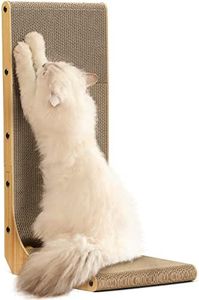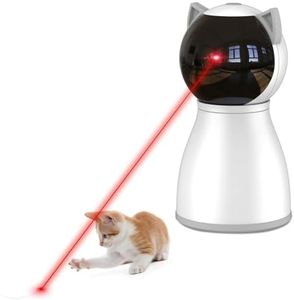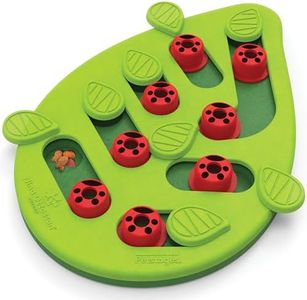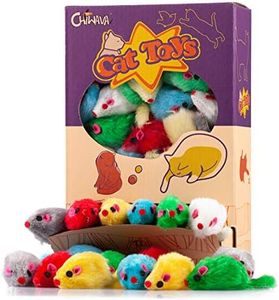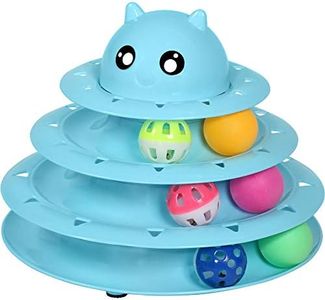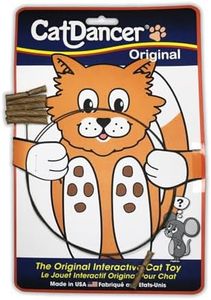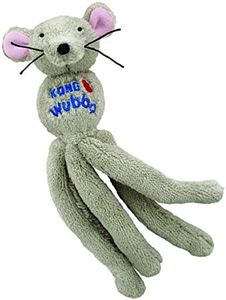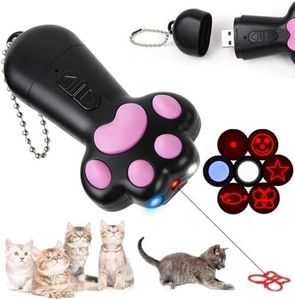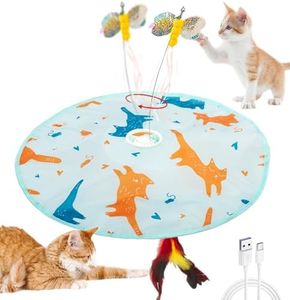We Use CookiesWe use cookies to enhance the security, performance,
functionality and for analytical and promotional activities. By continuing to browse this site you
are agreeing to our privacy policy
10 Best Toys For Cats
From leading brands and best sellers available on the web.Buying Guide for the Best Toys For Cats
When picking toys for your cat, it's important to focus on what will keep your kitty entertained, safe, and mentally stimulated. Cats have different personalities and play styles, so what works for one might not work for another. The best cat toys typically encourage exercise, fulfill hunting instincts, and are made from safe materials. Always consider your cat's age, energy level, and your ability to supervise play. Observing what types of activities your cat enjoys will help you choose toys that will engage them the most.Toy TypeToy type refers to the design or category of the toy, such as interactive, wand, puzzle, solo, plush, or electronic toys. Each type engages cats in different ways; for example, wands and interactive toys require you to join the play, stimulating your cat's hunting instincts and strengthening your bond. Solo toys, like balls or plush mice, let cats entertain themselves independently. Puzzle toys challenge their minds, while electronic toys can provide automatic movement when you're busy. Think about your cat’s preferences—if they love to chase, wand toys might be best, but if they enjoy solving problems, puzzle toys are a great option.
Material and SafetyThe material and safety of a toy are crucial because cats will bite, claw, or even chew on their toys. Safe materials should be non-toxic, durable, and free from loose, detachable parts that could be swallowed or choked on. Generally, cat toys are made from fabrics, rubber, hard plastics, or natural materials like wood or feathers. Soft plush or fabric toys are suitable for gentle cats or kittens, whereas tougher materials might be necessary for rougher play. Always inspect toys for wear and tear, and avoid those with small bells, beads, or glued-on decorations for unsupervised play.
Size and ShapeSize and shape affect how easily your cat can play with and carry the toy. Smaller, light toys are good for kittens or smaller cats who like to bat and toss things around, while larger or heavier toys might suit bigger, more active cats. The shape should match your cat’s interests—some love little balls to chase, while others prefer longer toys they can kick or wrestle. By observing your cat’s play habits, you can decide if they like toys they can pounce on, chase across the floor, or cuddle with.
InteractivityInteractivity measures how much your involvement or the toy’s internal mechanisms stimulate your cat. Some toys, like wands, require you to move them, creating dynamic and engaging play sessions. Others, like battery-operated or motion-activated toys, move on their own and can keep your cat busy when you're not around. Less interactive toys can still be effective if your cat enjoys playing alone. Think about your own routine—if you have time to play with your cat, interactive toys can be rewarding, but if your cat will often be alone, self-moving or solo toys may be better.
Sensory StimulationSensory stimulation refers to how the toy appeals to your cat’s senses—sight, sound, smell, and touch. Many toys use feathers, crinkly materials, or catnip to make them more enticing. Toys with bright colors or patterns attract attention, while those with bells or crinkles add sounds that mimic prey. Catnip-filled or scent-infused toys can activate natural instincts and create excitement. If your cat responds well to smells, catnip toys might be highly effective; otherwise, toys with sound or texture may be more appealing.
